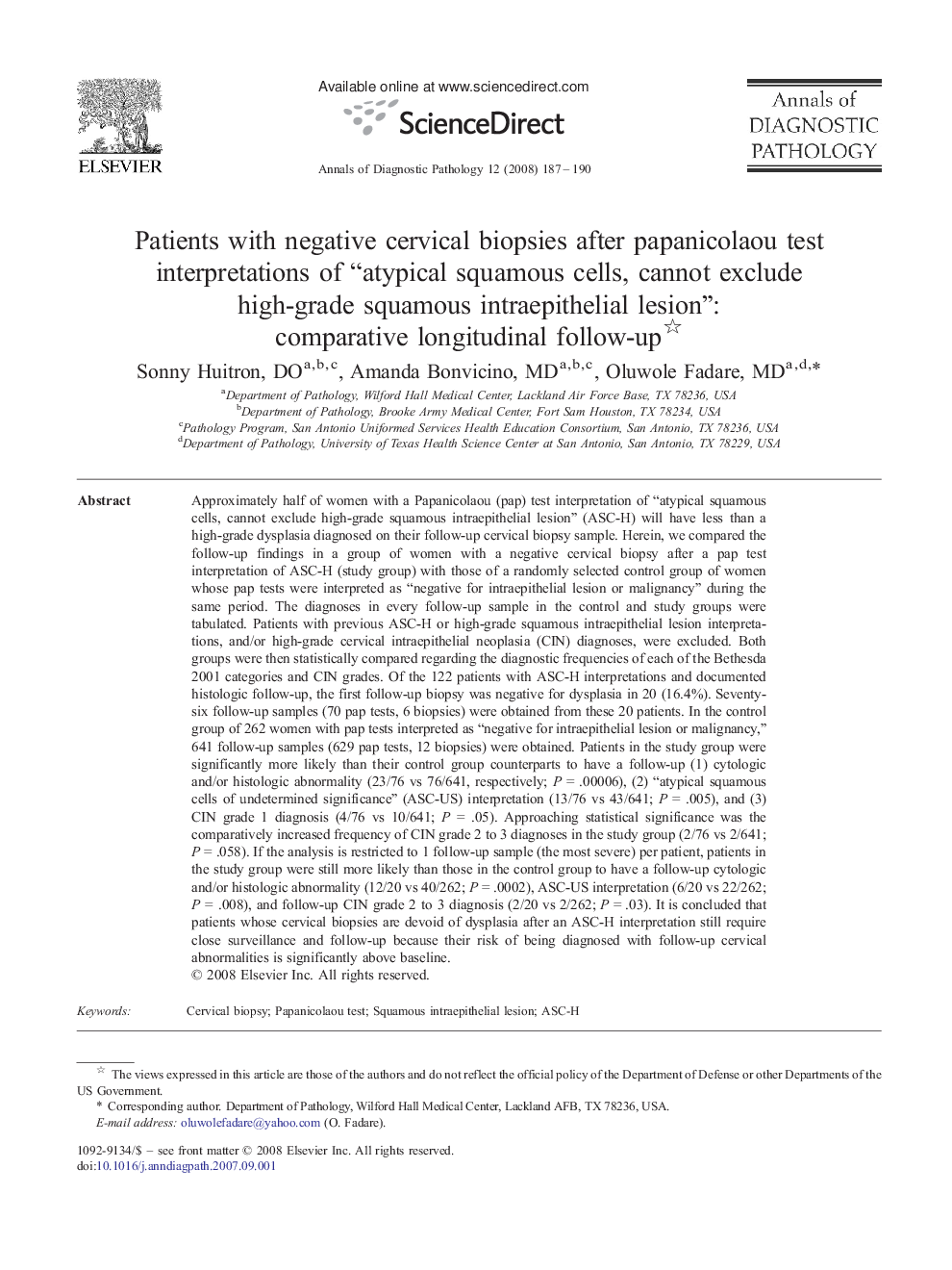| Article ID | Journal | Published Year | Pages | File Type |
|---|---|---|---|---|
| 4130659 | Annals of Diagnostic Pathology | 2008 | 4 Pages |
Approximately half of women with a Papanicolaou (pap) test interpretation of “atypical squamous cells, cannot exclude high-grade squamous intraepithelial lesion” (ASC-H) will have less than a high-grade dysplasia diagnosed on their follow-up cervical biopsy sample. Herein, we compared the follow-up findings in a group of women with a negative cervical biopsy after a pap test interpretation of ASC-H (study group) with those of a randomly selected control group of women whose pap tests were interpreted as “negative for intraepithelial lesion or malignancy” during the same period. The diagnoses in every follow-up sample in the control and study groups were tabulated. Patients with previous ASC-H or high-grade squamous intraepithelial lesion interpretations, and/or high-grade cervical intraepithelial neoplasia (CIN) diagnoses, were excluded. Both groups were then statistically compared regarding the diagnostic frequencies of each of the Bethesda 2001 categories and CIN grades. Of the 122 patients with ASC-H interpretations and documented histologic follow-up, the first follow-up biopsy was negative for dysplasia in 20 (16.4%). Seventy-six follow-up samples (70 pap tests, 6 biopsies) were obtained from these 20 patients. In the control group of 262 women with pap tests interpreted as “negative for intraepithelial lesion or malignancy,” 641 follow-up samples (629 pap tests, 12 biopsies) were obtained. Patients in the study group were significantly more likely than their control group counterparts to have a follow-up (1) cytologic and/or histologic abnormality (23/76 vs 76/641, respectively; P = .00006), (2) “atypical squamous cells of undetermined significance” (ASC-US) interpretation (13/76 vs 43/641; P = .005), and (3) CIN grade 1 diagnosis (4/76 vs 10/641; P = .05). Approaching statistical significance was the comparatively increased frequency of CIN grade 2 to 3 diagnoses in the study group (2/76 vs 2/641; P = .058). If the analysis is restricted to 1 follow-up sample (the most severe) per patient, patients in the study group were still more likely than those in the control group to have a follow-up cytologic and/or histologic abnormality (12/20 vs 40/262; P = .0002), ASC-US interpretation (6/20 vs 22/262; P = .008), and follow-up CIN grade 2 to 3 diagnosis (2/20 vs 2/262; P = .03). It is concluded that patients whose cervical biopsies are devoid of dysplasia after an ASC-H interpretation still require close surveillance and follow-up because their risk of being diagnosed with follow-up cervical abnormalities is significantly above baseline.
